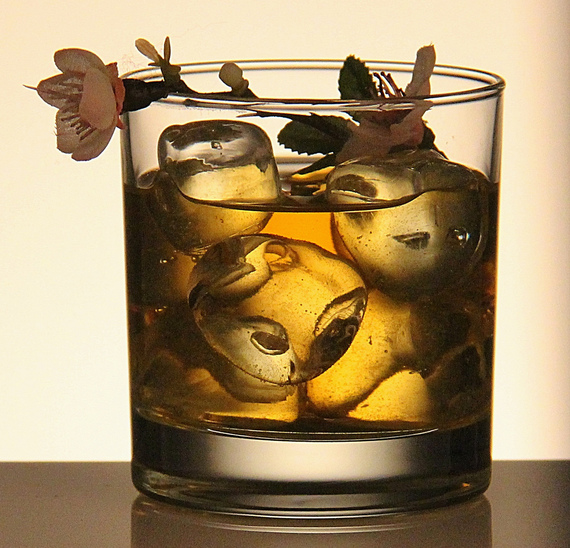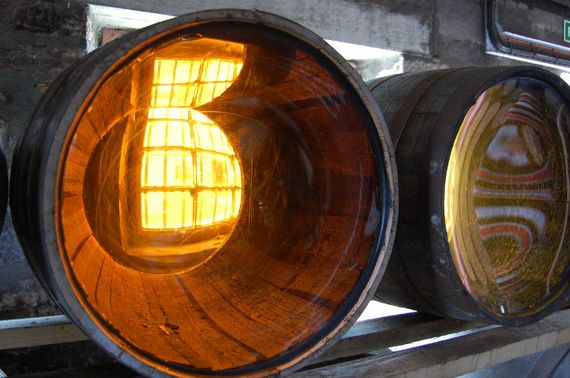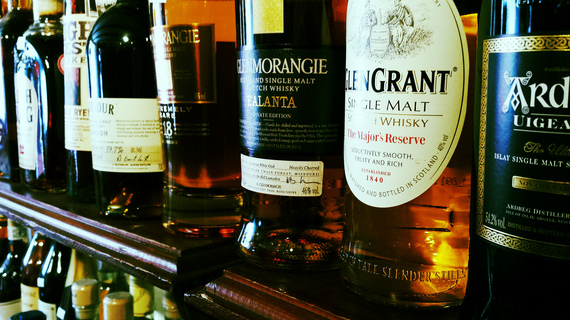
Last weekend, we celebrated National Scotch Day, which is a perfect excuse to brush up on the basics and get to know the manliest thing to sip.
Meet Scotch Whisky
Scotch is one of those special spirits that manages to distill the essence of a place into a bottle. A combination of Scottish barley, smoke from a peat-fired flame and clear, cold water conspire to give the drink its distinctively bold flavor. Scotch can only come from Scotland, in the same way that Tequila can only come from parts of Mexico or Champagne from France.

Susanne Nilsson / Flickr
The word "whisky" itself ("usquebaugh" in the original) is from Scotland's traditional language, Gaelic. It means "water of life," and we'd drink to that. Even though you could theoretically reproduce Scotch outside of Scotland, legally you couldn't call it Scotch, and as you'll soon learn, so much of the geography of Scotland goes into the spirit that there's no good reason to try to reproduce it elsewhere. Here, then, is your ultimate Scotch whisky guide.
How It's Made
First, start with barley. If a whisky is "malted," that means that wet barley was spread in a huge room and brought it to a temperature where it barely starts sprouting. In other words, the Scotch-makers fool the grain into thinking it's going to grow into a plant instead of a future of pulverization and lots of procedures with scalding hot water.

Vicky Brock / Flickr
During this malting, many distilleries (and professional malters that sell to distilleries) use peat, which is kind of like charcoal that still needs a few million years to harden, to smoke the malt. This, friends, is how you get that delicious smoky flavor. Some other things help, but this step in the process really gives Scotch its one-of-a-kind taste.
It's Mashing Time
The grain is ground to powder and thrown into a big tank of water, along with yeast that eats grain and excretes alcohol. The booze is boiled off a few times, and then the good stuff -- what's now basically moonshine (or "new make spirit," as they say on the other side of the pond) -- is put into casks that spent their first life holding sherry, bourbon or even rye inside.
If you've ever wondered why a four- or six-year bourbon can be the height of quality but good Scotches start closer to the 10- or 12-year mark, blame it on the cool Scottish clime. Down in Kentucky, it gets so hot in the warehouses during the summer and so cool during the winter that the liquid inside expands into the wood and gets squeezed out many times over during its aging.

Dominic Lockyer / Flickr
In Scotland, the process -- and some would say the drink, but we'd take issue with that -- is a lot more subtle. There's a more gradual aging, and a double-barrel Scotch will even spend time in two different barrels, absorbing the character of each. Once it's bottled, Scotch doesn't get better, but if kept in a cool, dark place, it shouldn't get worse.
There's a lot of confusion about the difference between single malt and blended Scotch. Blended Scotch is just that: a combination of up to 50 grain (non-malted whisky) and single malts from various producers. There are severe laws that dictate the age on the label. It cannot, for example, be less than three years old, and the age on the label is for the youngest whisky in the blend.
The "single" in single malt refers to one single producer or distillery. What's in the bottle, in other words, is the result of one production process and not a blend of many. This, for the person who's ready to dive deeper into the waters of life, is where things get interesting.
There's a lot more about Scotch whisky in the original article on AskMen.
If you can't know enough about whisky, check out these links:
10 Things You Need To Know About Drinking Scotch Whisky
Beginner's Guide To Scotch Whisky
No-Age Statement Scotch
Whiskey And Beer Used To Be Two Totally Different Things. Keyword: 'Used To'